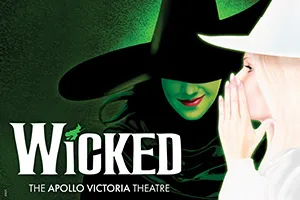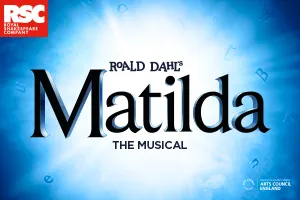It’s rare for a play’s allegory to be as widely known as its actual story. Having been a staple on Eng. Lit reading lists since it was written in 1953, you may know The Crucible is based on the true story of the 17th century Salem witch trials. But you’re as likely to know it’s Arthur Miller’s allegory for McCarthyism in 1950s America.
A tale we have been told before and will be told again. The telling is adequate. The packaging is pretty.
There’s also a chance you might think it’s about the McCarthy witch trials that took place in 1950s America, allegorically. Such confusion is quite understandable.
This widespread awareness of the metaphor at play means any major new production will ignite conversations about relevance. After all, history may change, but do humans? Nearly seven decades later, director Lyndsey Turner brings her take to the National Theatre’s Olivier.
Fictional facts
Though it doesn’t pretend to be a documentary, Miller himself said the story of The Crucible is “taken from history” with “no character (…) in the play who did not take a similar role in Salem, 1692." As it is the only source of knowledge many of us have about Salem, it plays an important role in history.
Abigail Williams really was one of the first children to accuse women of witchcraft. John Proctor defended the absurd claims. The two did have an intimate relationship.
Miller portrays Abigail as an unruly 17 year old. She bullies. She lies. She tempts Proctor into sex and his later rejection builds in her a vengeance that ultimately results in the hanging of innocent women.
Conversely, John Proctor is shown as a good-hearted man in his mid-30s. An everyman who is flawed like us all. But he is honest, despite his lies. He is loyal, aside from his adultery. And he is kind, apart from the violence he shows his women servants.
She is a whore. He is a martyr.
We know for certain of two changes Miller made for the play. The real Abigail was 11 and the real Proctor was nearly 60. (I’ll pause to let that settle). For the purposes of clarity, the 60 year old ‘martyr’ was seduced by the 11 year old ‘whore’. So he fucked her.
It isn’t hard to imagine Harvey Weinstein, Kevin Spacey, Louis CK and chums all seeing a bit of themselves in good man John Proctor.
Attractive wrapping
You may be wondering how Lyndsey Turner uses this context to modernise the telling for 2022. She doesn’t.
Instead, she leaves the play as is. But wraps it in exquisite packaging.
Designer Es Devlin – Turner’s long-time collaborator – has made Salem a box. Its inhabitants are trapped in an insular world, with shining floor and lowered ceiling. Bound by the rules they created for their world, they will now become its victims.
Opening and closing each act, water falls dramatically in sheets of rain down three sides of this boxed world. Plastic macs worn by front row dwellers imply this isn’t just a well-lit effect.
Water is nothing new at the NT. A similar “curtain” was seen in 2019’s Rutherford and Son. And the climactic flooding was the highlight of 2021’s Manor (though the pleasure was helped as it marked the end of that disastrous play.) But it’s pretty impressive, nonetheless.
Increasing this claustrophobia, much of the play is soundtracked by a one-note hum. It aches for a crescendo that never comes. And occasionally, areas upstage are softly lit to reveal the accusing girls huddling. They plot. They plan. They harmonise. With intent.
The splendour of the wrapping only builds the disappointment of its contents.
Invisible balls
Having spent the budget to flaunt the hosepipe ban, there’s not much left for the actual set. This may be why they appear to be reusing the wooden seats from the recent production of The Corn is Green.
Keeping a good percentage of the 27-strong cast onstage for as long as possible stops the large stage from feeling empty. Miller builds the number of characters as he builds to each Act’s denouement. With rain forecast for three sides of the stage, actors can only enter upstage. They run down the steep rake, impart their line, then shuffle back a few steps where they stay until curtain / rain down.
A lot of people are left standing in a lot of semi-circles. A lot of silent “reacting acting” takes place to avoid taking the focus away from the current speaker. A lot of pointing acting takes place so the current speaker takes the focus.
Due to the massive width of the Olivier auditorium, you’re more likely to wonder where to look than to benefit from the blocked sightlines created. If this happens, my advice is to follow the arms as they rise and fall. It’s like spectating on a game of catch. Played with invisible balls.
Angry Abigail
We know Erin Doherty is adept at portraying characters with multi-layers. In The Crown, she brought vulnerability to the usually guarded Princess Anne. In the identity theft drama Chloe, she could be manipulative and at times scary, but you still wanted to give her a hug.
Her Abigail Williams is strong as you would expect. But there is no chance of us thinking of her as victim here. Doherty’s Abigail has villain writ large on her forehead.
With a shrill delivery, and her face screwed up, she appears to relish her own power. As she searches for her next hurtful lie, it’s impossible to care for this bitter and twisted adult woman.
There is no softness in her pleas with Proctor. They hint at lust, not love. Her tone is angry and threatening, not adoring or tender. Time may have passed since their fornication, but it’s difficult to understand how it ever could have happened.
Well, apart from there being an old man who wanted to have sex with a minor. But this production is no place for such thoughts.
Drunken Hulk
John Proctor seems to hail from a different part of America to the rest of the townsfolk. Brendan Cowell has an elongated drawl to an accent that appears to have come from Noo Yoik, or Noo Joisey, possibly via an as yet undiscovered Australia. But it’s not his accent that takes most of your attention.
As Proctor’s life crumbles and his world breaks down around him, Cowell physically represents the mental impact. Not for him the internal playing of turmoil. He shows the pain he feels with a physicality that borders on interpretative dance.
When his wife is arrested for witchery, he stumbles around the stage, as though his body is reacting to a sudden gravitational surge. His knees bend deeply as he walks. His arms stretch down to the floor like he’s carrying invisible weights. Perhaps he has been handed the bags of invisible balls.
He lunges for Mary Warren like a drunken Hulk in a blindfold. The staged rough-housing barely disguises his careful positioning of the two of them to rest where they won’t be drenched by rainfall. It is as though he is made of wax, and someone has lit a match.
True crime
The addition of a prologue and epilogue package the events that take place as a recounting of history. With text broken and delivered by the accusatory girls as their actor-selves, it first resembles a Shakespeare chorus.
The text is taken from Miller’s original prologue and his later-written essay, Echoes Down the Corridor. Not having been written as dialogue, the words sound more like subtitles. And it strikes one that this is less Shakespearean, more Netflixian. Recognisable from the structure of the many true crime dramas currently on the platform, they first set context and finally tell us what happened next.
It sums up what we have here. It’s a good story. A remake. A tale we have been told before and will be told again. The telling is adequate. The packaging is pretty.
For anyone who has Miller on their A-Level reading list, it will be a great study aid. I can imagine many papers benefiting from debates about the staging. But I can imagine far less will learn anything new from the performances.


















